Overview Niche Research:
Welcome to WebTechGullzaman, the ultimate hub for all things niche research! At WebTechGullzaman, we understand the pivotal role niche selection plays in building a successful online presence. Without thorough research, valuable time and effort could be squandered in unproductive avenues.
Within the confines of WebTechGullzaman, you’ll discover an exhaustive guide encompassing every facet of niche exploration. From pinpointing niche markets to analyzing prevailing trends and uncovering profitable yet untapped niches, we aim to arm you with the essential insights needed to make astute decisions.
Join us on this journey as we navigate the intricate landscape of niche research, providing you with invaluable strategies and insights to identify a niche brimming with opportunities for your online endeavors.
What is a niche market?
Understanding Niche Markets:
A niche market refers to a specific, specialized segment within a broader market. It’s a smaller, more focused group of people with shared interests, needs, or preferences. Instead of targeting everyone, businesses in niche markets concentrate on serving this distinct group of individuals with tailored products or services.
Simplified Example:
Imagine the broader market is all the people who might want a type of snack. Within that, a niche market could be people who specifically want gluten-free, vegan snacks. Businesses focusing on providing these specialized snacks target this niche market.
Using Wikipedia for Topic Ideas:
1. Wikipedia Overview: Wikipedia is an online encyclopedia containing a vast array of articles on different subjects. It’s a helpful resource to understand various topics in detail, written in easy-to-understand language.
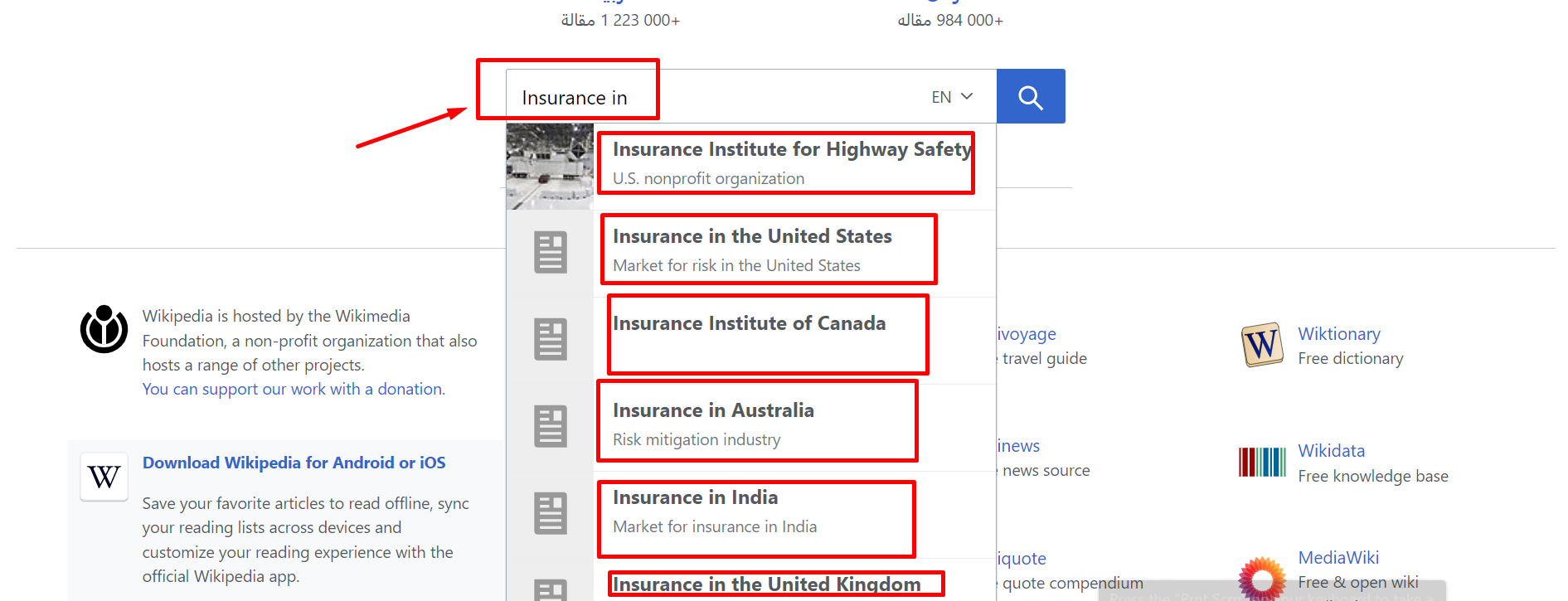
2. Searching “Insurance in” on Wikipedia: When you type “Insurance in” in Wikipedia’s search bar and add a specific location (like the USA, UK, Canada, etc.), it generates articles specifically discussing insurance within that particular region. These articles can offer insights into the insurance industry, regulations, history, and key aspects within those countries or areas.
Using Google Auto-Suggestions:
1. Google Auto-Suggestions Overview: Google’s auto-suggestions provide recommended search phrases based on popular searches, giving you an idea of what people commonly look for.
2. Searching “Insurance in” on Google: When you start typing “Insurance in” on Google’s search bar, it suggests various regions (such as the USA, UK, Pakistan, etc.). These suggestions give you an idea of the most searched-for locations in terms of insurance-related queries. Clicking on these suggestions will lead you to articles, websites, or information specifically related to insurance in those regions.
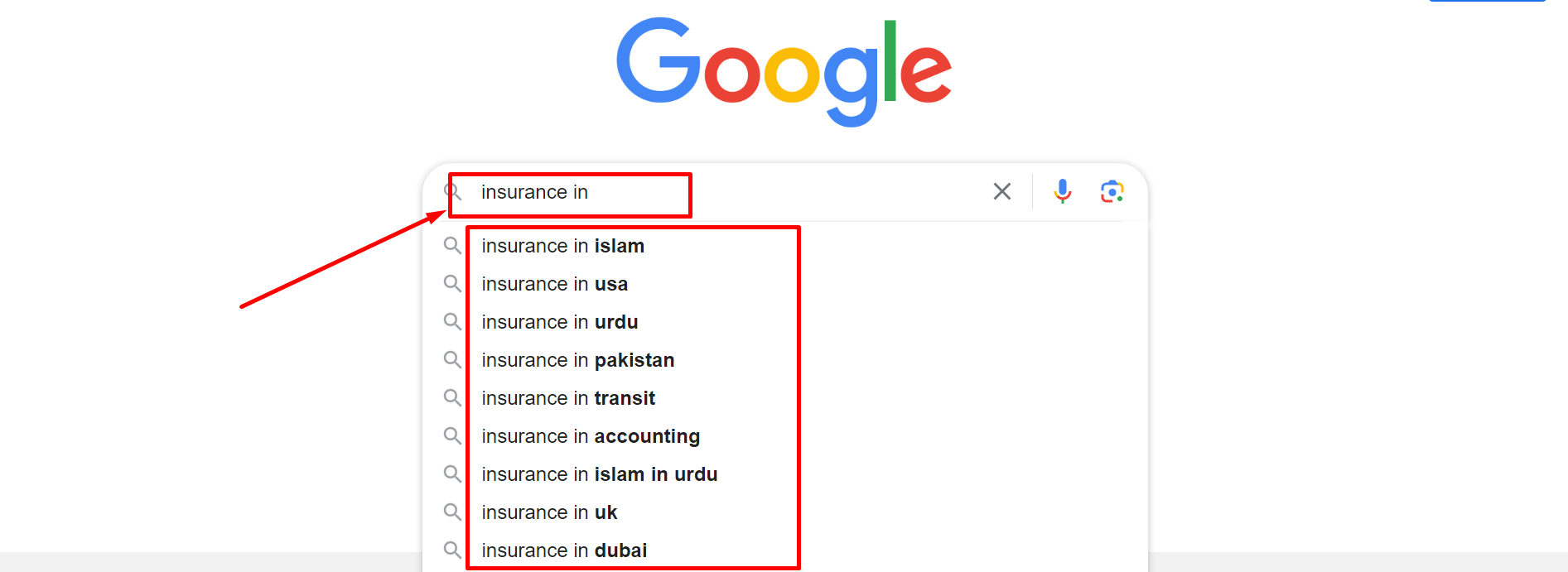
Why It’s Helpful for Beginners: For beginners exploring niche markets, using these tools helps in understanding specific aspects or details related to a niche market, like insurance, in different locations. It’s a great way to gather insights into regional differences, regulations, trends, and customer needs within those niche markets.
Remember, exploring niche markets through resources like Wikipedia and Google’s auto-suggestions can provide valuable information to beginners looking to understand specific topics or industries in-depth. It’s a step towards grasping the nuances of niche markets in different regions or areas of interest.
What are niche trends?
Monitoring niche trends involves utilizing various strategies and tools to stay informed about the evolving preferences, interests, and demands within a specific market segment. Here are some methods to explore niche trends:
Google Trends:
Google Trends is a powerful tool that provides insights into search interest over time for particular keywords. By analyzing search volume patterns, you can identify rising or declining trends within your niche. It helps in understanding the popularity of specific topics or products, allowing you to tailor your offerings accordingly.
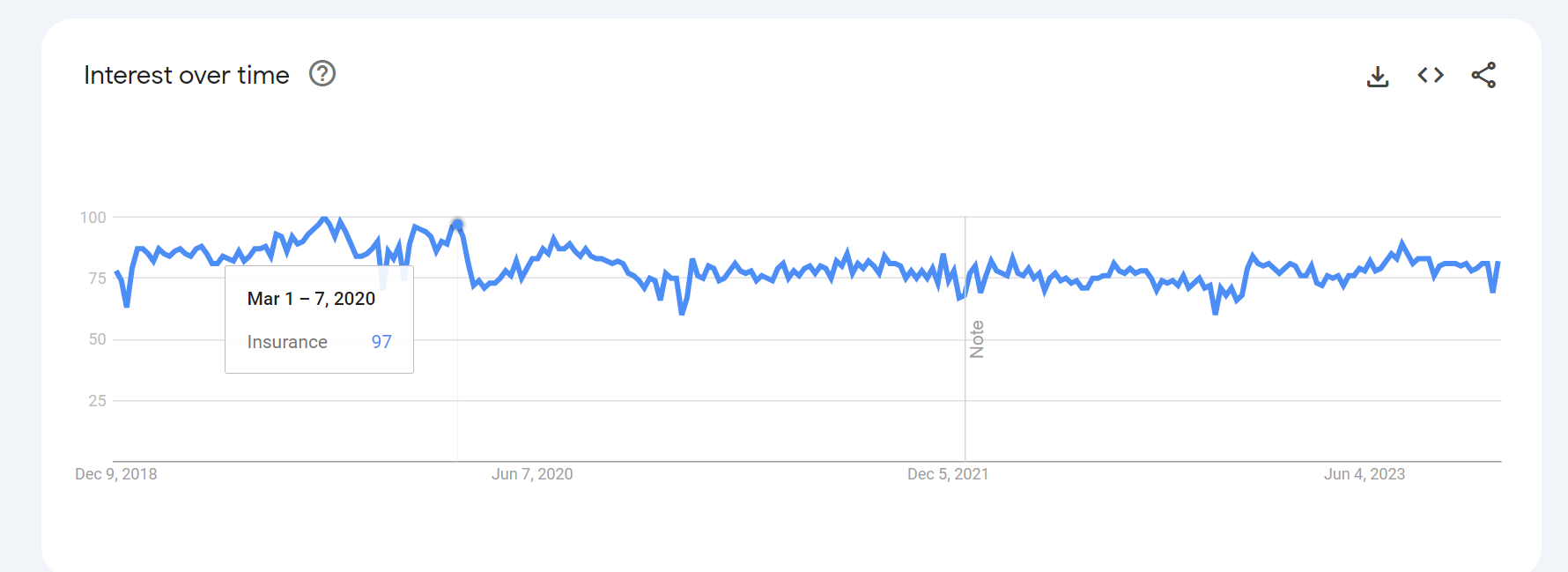
Upon conducting a global search on Google Trends for the term “insurance in” over the past year, the data indicates a consistent and significant trend. This keyword exhibits considerable traffic across various countries, emerging as a top-trending search term worldwide within the insurance niche. The data suggests a sustained high level of interest and engagement with this particular keyword across diverse regions, reflecting its prominence and relevance in the global landscape.
Social Media Monitoring:
Platforms like Twitter, Facebook, Instagram, and LinkedIn offer valuable insights into ongoing discussions, hashtags, and user engagement related to niche topics. Monitoring conversations, comments, and shares can reveal emerging trends and popular sentiments within the niche community.
Industry Publications and Reports:
Keeping up with industry-specific publications, reports, and newsletters can provide in-depth analysis and forecasts regarding niche markets. These resources often offer comprehensive insights into consumer behavior, emerging technologies, and market trends.
Keyword Research Tools:
Using tools like SEMrush, Ahrefs, or Ubersuggest can assist in identifying high-volume keywords, their search volume, and related queries. This information helps understand what users are searching for within the niche, highlighting potential trends or topics gaining traction.
Competitor Analysis:
Analyzing competitors within the niche provides valuable insights into their strategies, product offerings, and marketing campaigns. Monitoring their successes and failures can help identify emerging trends or shifts in consumer preferences.
Ad Platforms and Analytics:
Platforms like Google Ads, Facebook Ads Manager, or LinkedIn Ads offer insights into ad performance, audience engagement, and demographic data. Analyzing ad metrics can unveil trends and preferences among your target audience.
Surveys and Feedback:
Conducting surveys or gathering feedback from your audience can offer direct insights into their preferences, pain points, and emerging interests. Platforms like SurveyMonkey or Google Forms can help collect this information.
Trade Shows and Conferences:
Attending industry-specific trade shows, conferences, or webinars allows you to network with experts and peers, gaining firsthand knowledge of emerging trends, innovations, and market shifts within your niche.
By utilizing these strategies and tools, businesses can stay abreast of evolving niche trends, enabling them to adapt their strategies, products, and marketing efforts effectively to meet the changing demands of their target audience.
Niche Competitors
Step 1: Identifying Your Niche Rivals
Initiate a targeted Google search using precise niche keywords such as ‘Insurance’. This search will unveil the top-ranking sites relevant to your niche. From these results, select the top 5 sites that prominently represent your niche.
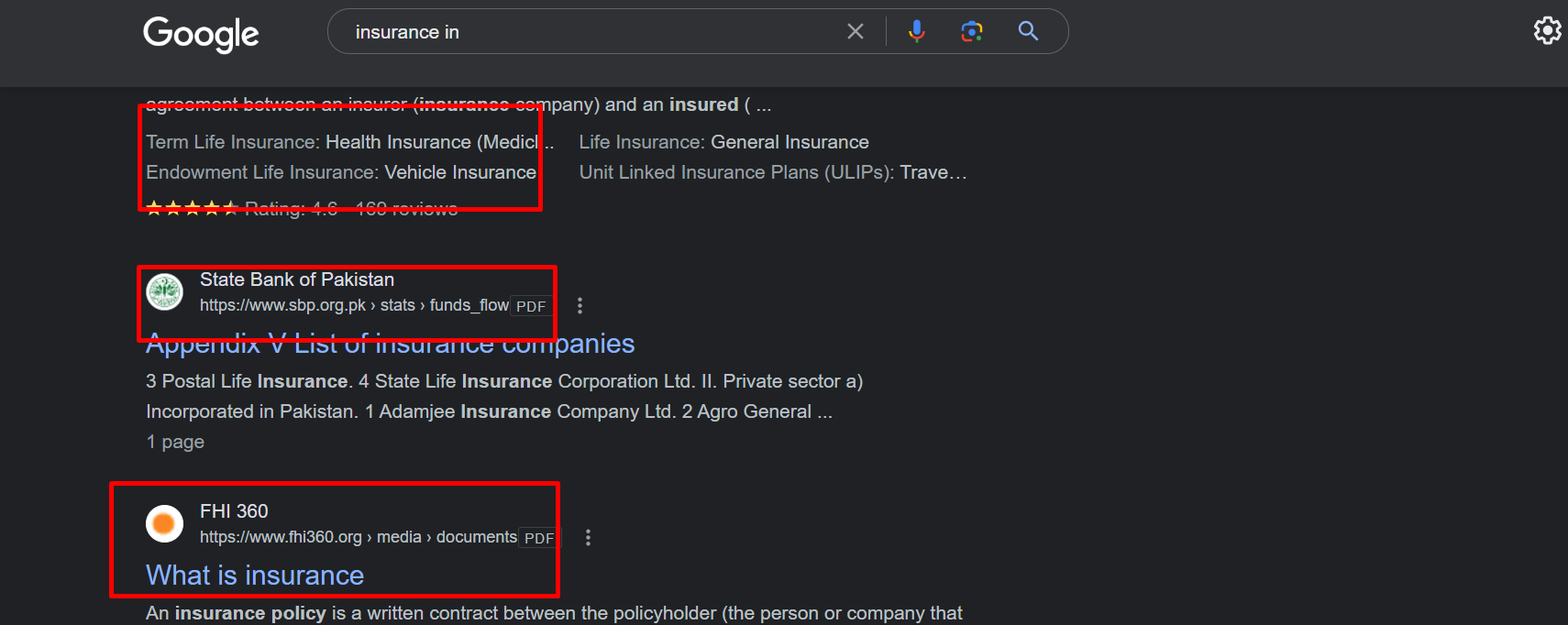
- Competitor 1:
- Competitor 2:
- Competitor 3:
- Competitor 4:
- Competitor 5:
Explore Competitors on SimilarWeb
SimilarWeb is a powerful competitive analysis tool providing insights into competitors’ website traffic, audience engagement, and digital performance metrics. By entering a competitor’s URL, users can access valuable data on traffic sources, audience demographics, engagement metrics, and more. This information assists in understanding the competitive landscape, aiding businesses in refining strategies and identifying opportunities for growth within their industry.
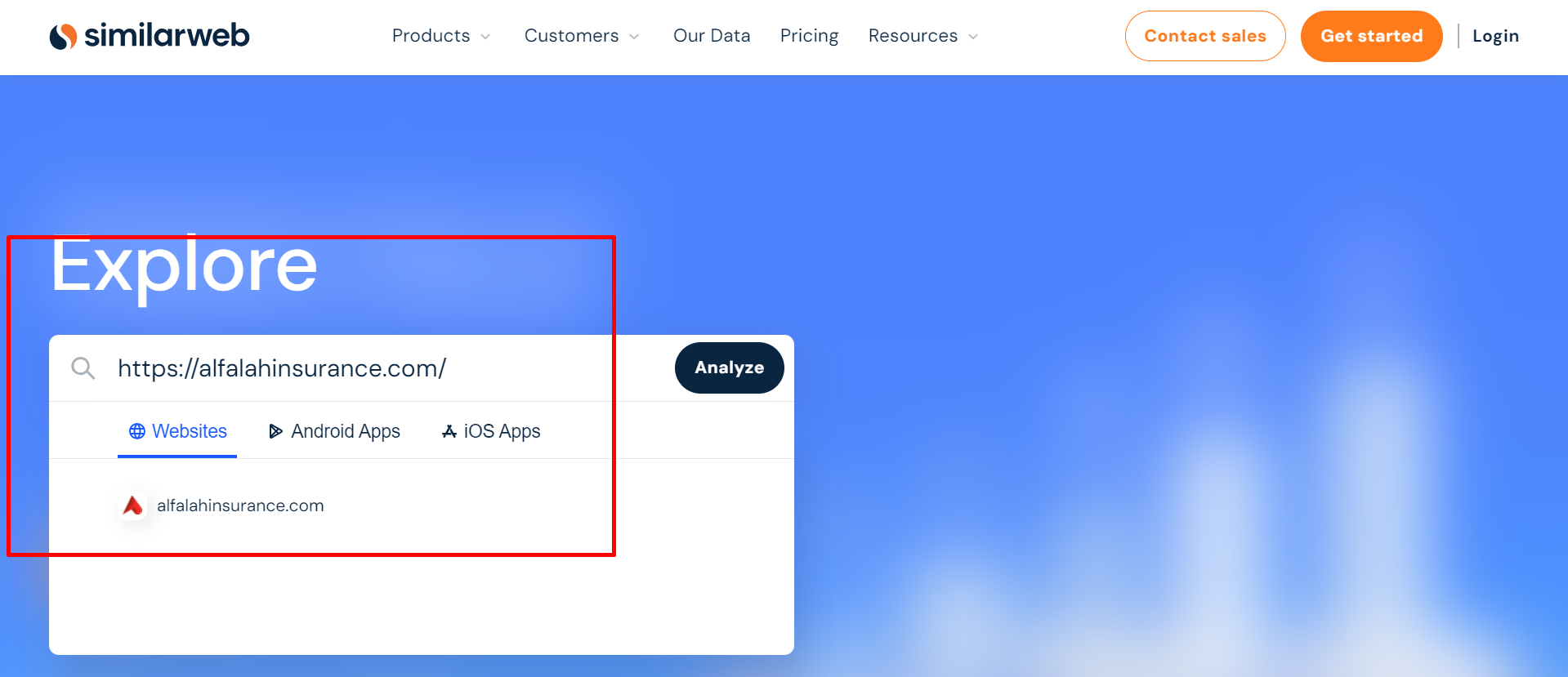
Step 2: Comprehensive Analysis Using Specialized Tools
Utilize a variety of robust analytical tools such as SEMrush, Ahrefs, Ubersuggest, Moz, and others. Dive deep into these tools to dissect your identified competitors. Explore their strategies, keyword strengths, backlink profiles, and overall online presence.
SEMrush:
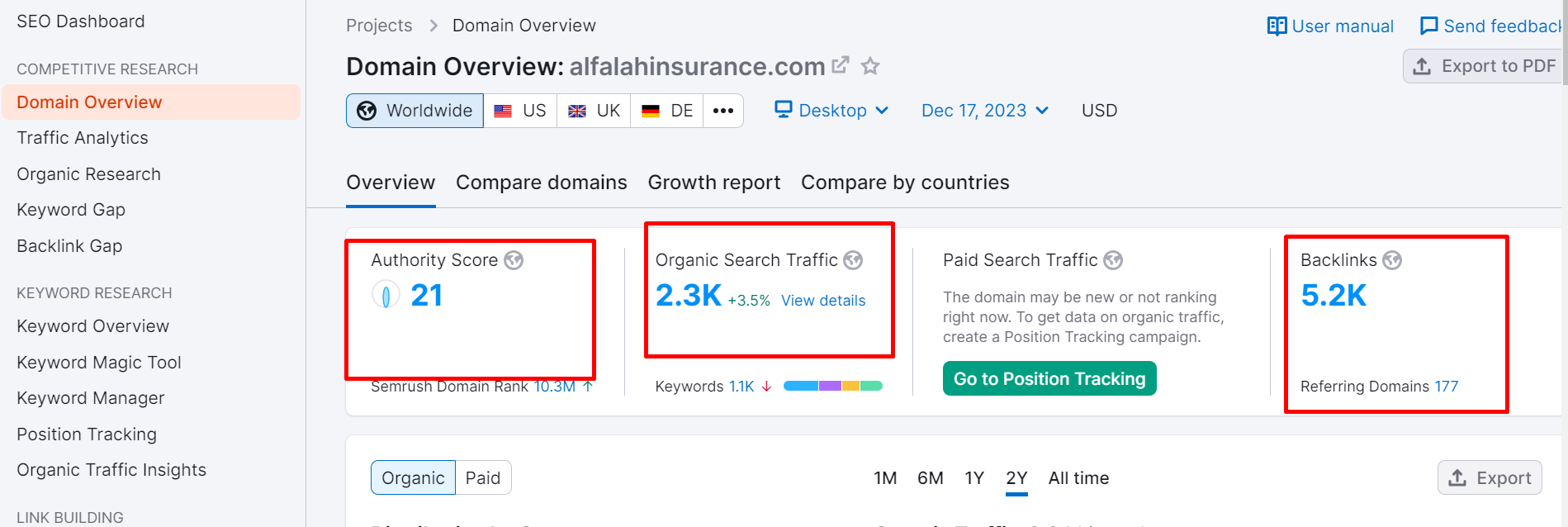
Step 3: Gaining Strategic Insights
Unearth valuable insights from this in-depth analysis. Understand your competitors’ tactics, areas of dominance, and potential weaknesses. Leverage this knowledge to refine and adapt your own strategies, aiming to capture your audience’s attention more effectively.
Moz Pro
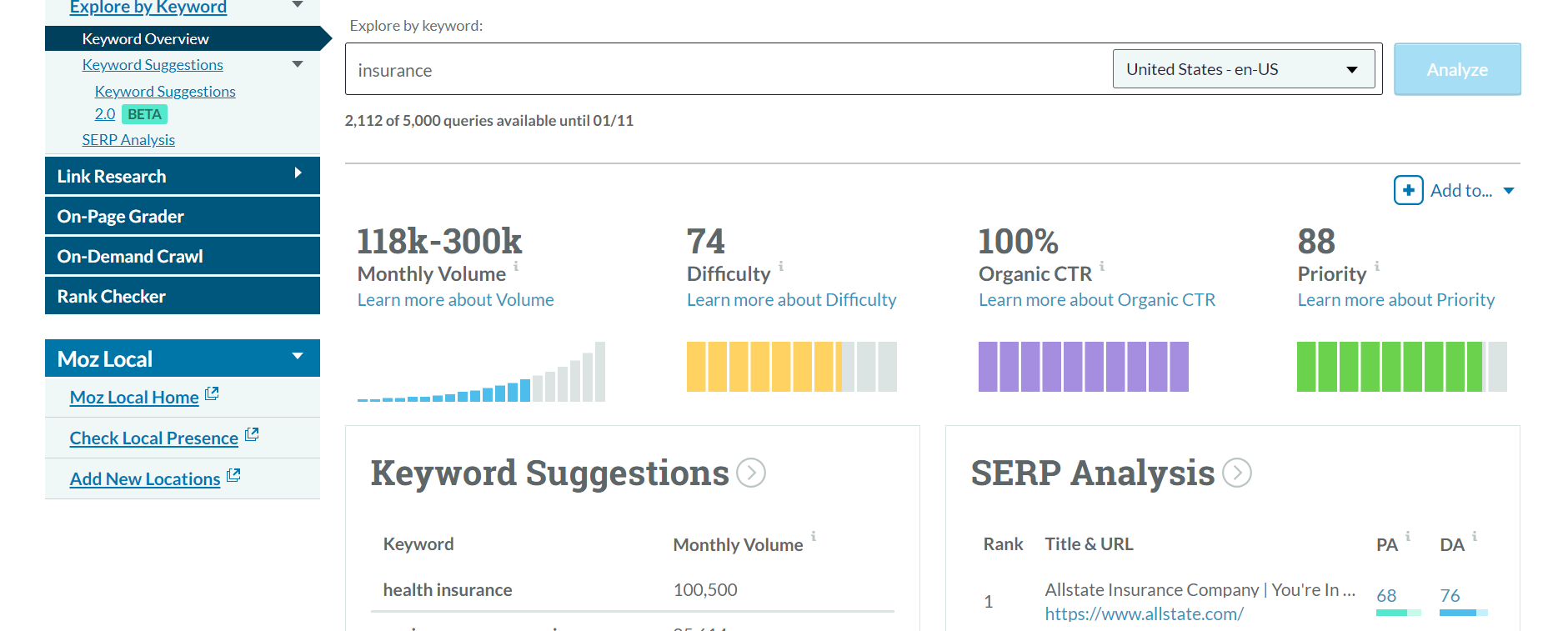
Step 4: Tailoring Your Approach
Armed with comprehensive competitor intelligence, fine-tune your approach to stand out in your niche. Craft compelling content, refine your SEO strategy, and engage your audience in ways that set you apart while capitalizing on your newfound understanding of competitor strengths and weaknesses.
KWFinder:
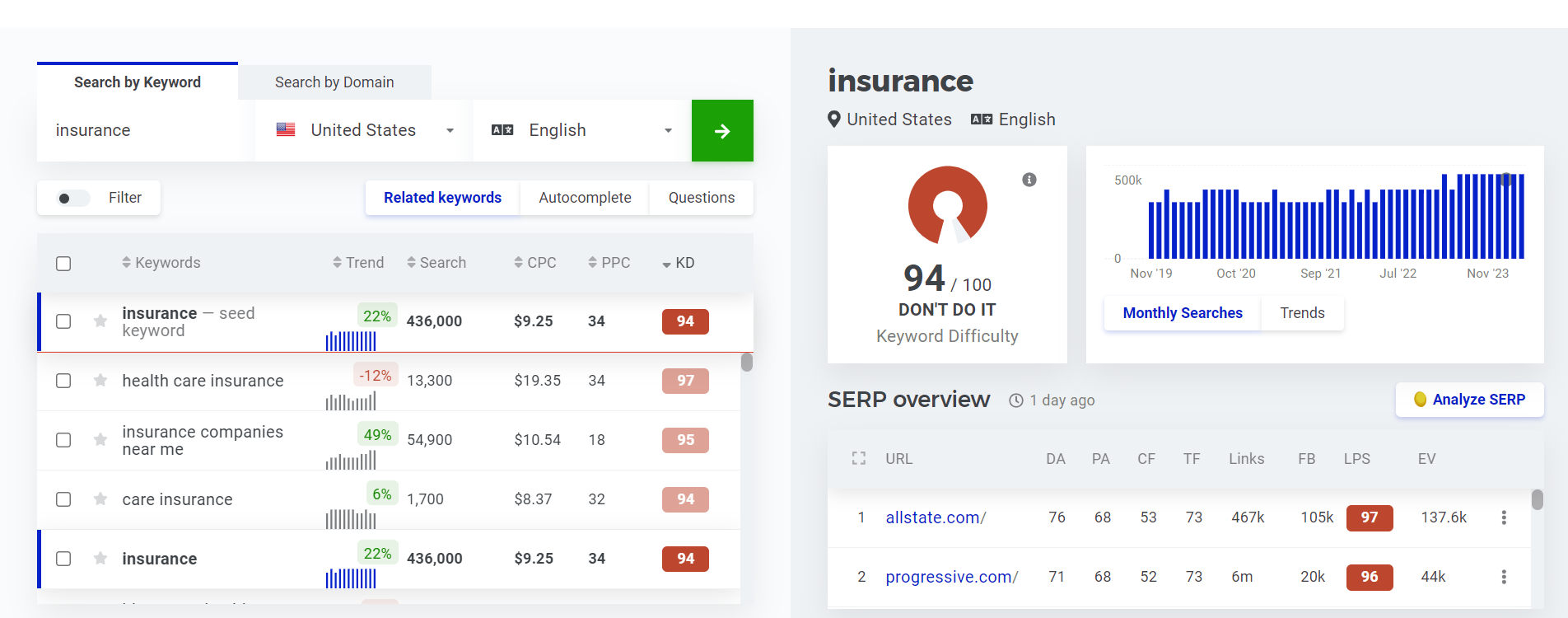
Explore Keyword On Answer the Public:
When using Answer the Public for niche research, you’re presented with a treasure trove of potential content ideas. From the 735 questions and the additional 390 alphabetically arranged inquiries, there’s a wealth of topics to consider for your blog.
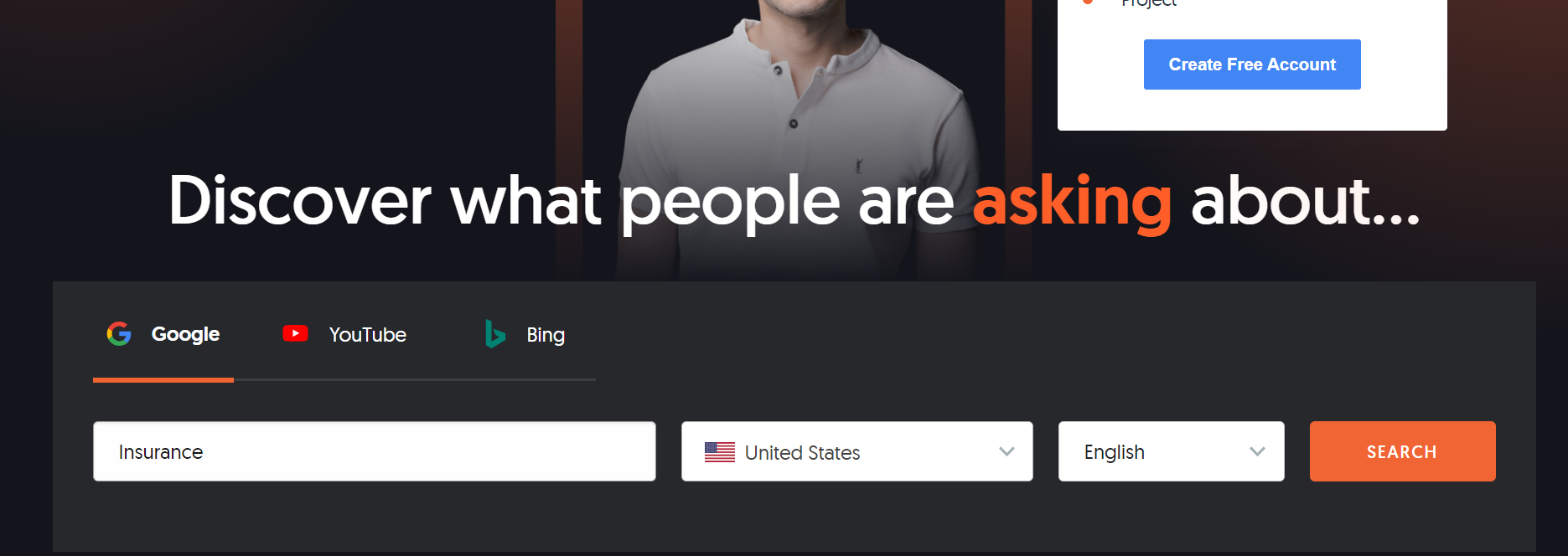
Exploring the 735 Questions:
Answer the Public’s compilation of 735 questions provides a broad spectrum of inquiries relevant to your niche. These questions reflect what people are actively searching for on Google. Your task is to sift through these queries and identify those that align most closely with your blog’s focus and your audience’s interests.
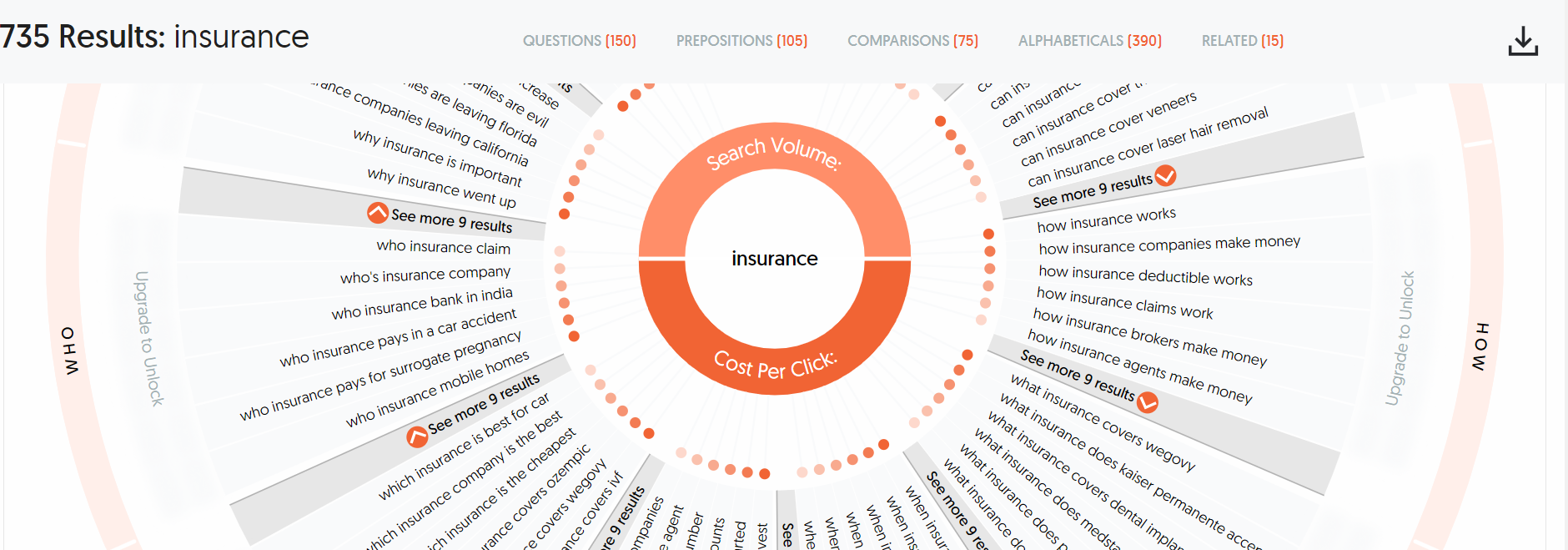
Consider questions that address common pain points, seek solutions, or offer valuable insights. Choose topics that resonate with your target audience, providing information, solutions, or perspectives that can genuinely benefit them. These questions serve as a compass, guiding you toward content ideas that can engage and resonate with your readers.
Utilizing the 390 Alphabetical Questions:
The 390 questions categorized alphabetically provide an organized structure for understanding the breadth of inquiries within your niche. This arrangement can help you categorize topics more efficiently, making it easier to navigate and identify clusters of related questions.
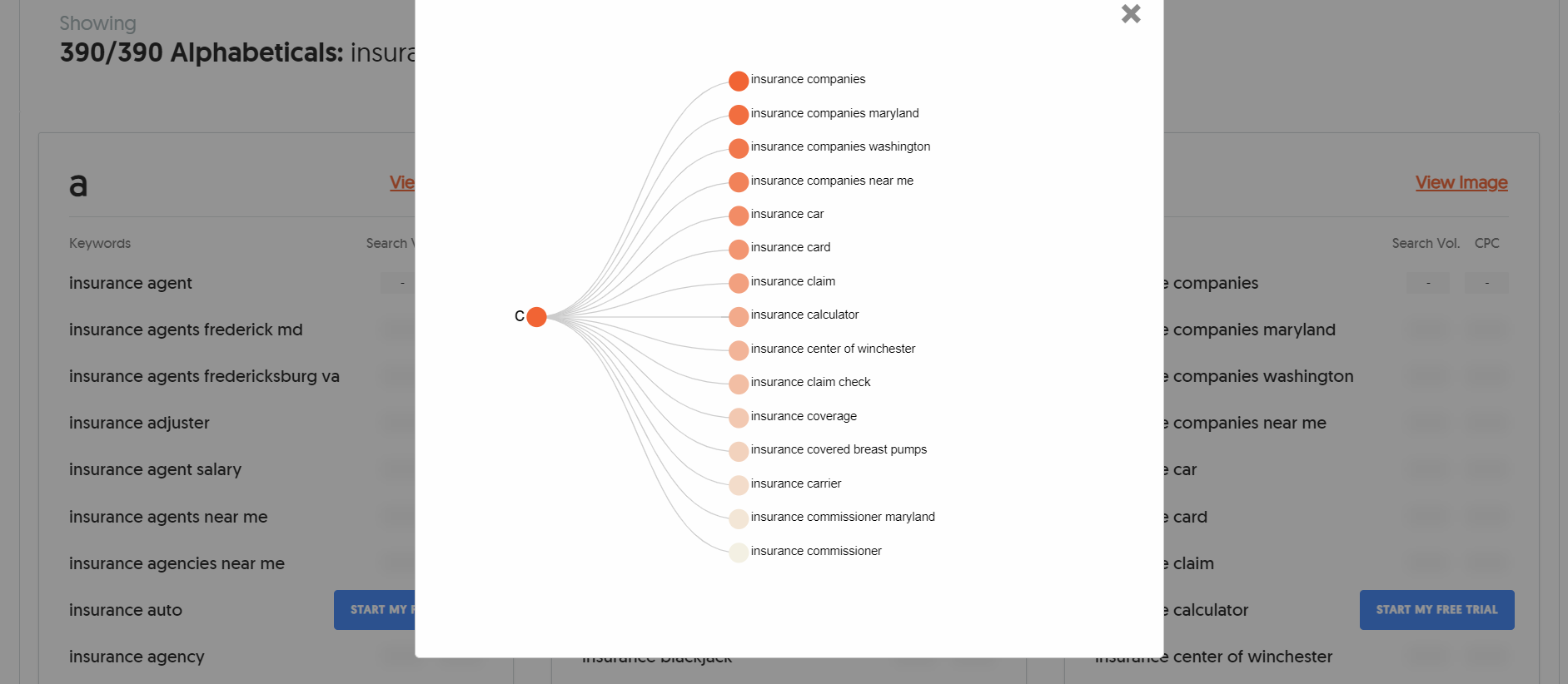
Each alphabetically sorted question offers a unique angle or perspective on your niche. From ‘Auto Insurance’ to ‘Zurich Insurance’ (or any other relevant terms), these questions encompass a wide array of topics that can inspire your blog’s content creation.
Choosing Topics for Your Blog:
Selecting which questions to cover in your blog depends on several factors:
- Relevance: Choose questions that directly relate to your blog’s focus and the interests of your audience.
- Interest Level: Prioritize topics that are likely to capture readers’ attention or address common queries.
- Uniqueness: Consider tackling questions from a fresh angle or providing unique insights to stand out from existing content on similar topics.
By leveraging both the vast pool of 735 questions and the categorized 390 alphabetical inquiries, you can curate a diverse range of blog topics. Aim to offer informative, engaging, and valuable content that caters to your audience’s needs and interests while establishing your authority within your niche.
List Of Niche Ideas
- Is the Traveling Niche Profitable for Bloggers? 63+ Micro Niches Ideas
- Is the Insurance Niche Profitable for Bloggers? 63+ Micro Niches Ideas
- Is the Photography Niche Profitable for Blogging? Also 63+ Micro Niches ideas
- Is the Fitness Niche Profitable for Blogging? Report, Trends, 20+ Ideas
- Exploring Fashion Niches for Blogging Success – 40+ fashion niche ideas
- Lucrative Insurance Niches for Blogging Success
- Is the Food Niche Profitable for Bloggers? 63+ Micro Niches Ideas
More For Visit Our Category Micro Niches or Click Here:


